
Introduction
The Sigma 28-105mm F2.8 DG DN Art is a fast standard zoom lens for full-frame Sony E-Mount and Leica / Panasonic / Sigma L-Mount cameras.
It will also work with APS-C sensor cameras with an effective increase in focal length to 42-157.5mm due to the crop factor.
The optical formula is comprised of 18 elements in 13 groups, including 2 FLD glass elements, 1 SLD glass elements, and 5 aspherical lens elements to limit distortion and spherical aberrations. It features a rounded 12 blade diaphragm which creates an attractive blur to the out of focus areas of the image.
A traditional aperture ring runs from f/2.8 to f/22 in third-stop increments with an Auto setting available for camera-based aperture selection. There is also an aperture ring lock switch, an aperture ring click switch, a zoom lock switch, dedicated AF/MF switch and two customisable AFL buttons.
The Super Multi-Layer coating helps to ensure that flare and ghosting are well-controlled even in backlit conditions and the lens has a dust and splash resistant structure with special sealing at the mount connection, manual focus ring, zoom ring, and cover connection.
It also offers a linear motor HLA (High-response Linear Actuator) for fast and quiet autofocusing, with a minimum focusing distance of 40cm / 1.31ft and a maximum reproduction ratio of 1:3.1 (at 105mm).
The Sigma 28-105mm F2.8 DG DN Art lens is priced at £1399.99 / $1499.99 in the UK and the USA, respectively. This lens was first announced in September 2024. It is designed and made in Japan.
Ease of Use
Weighing in at 995g / 35.1oz. and measuring almost 16cm in length, the Sigma 28-105mm F2.8 DG DN Art is quite a large and heavy standard zoom lens, although it does usefully offer a fast maximum aperture of F2.8 throughout the versatile focal range.
As seen in the photos below, it complements a full-frame camera like the Panasonic Lu mix S5II that we tested it with, although it feels somewhat out of place on a smaller APS-C body.
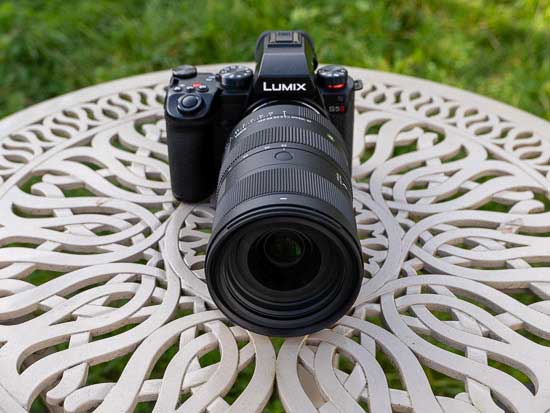
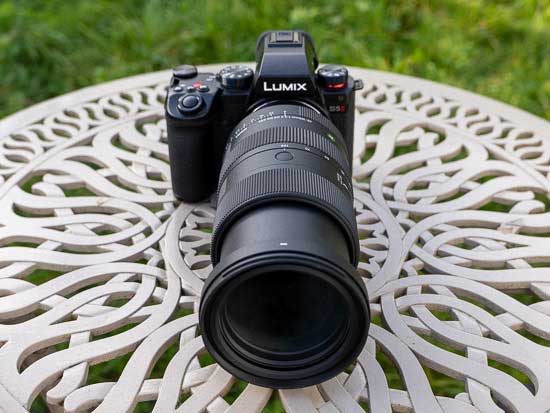
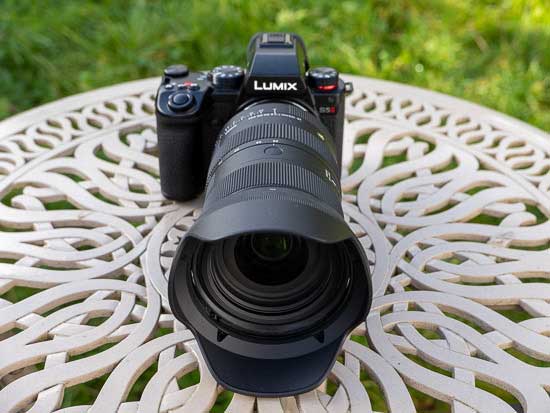
Build quality is excellent given the comparatively affordable price tag. The lens has a plastic shell with a mixture of metallic parts and a compound material, TSC (Thermally Stable Composite), used inside.
The lens barrel near the mount is made of magnesium rather than aluminum, ensuring rigidity while reducing the weight of these parts by two-thirds.
It also incorporates a brass bayonet mount that’s supposed to be more durable.
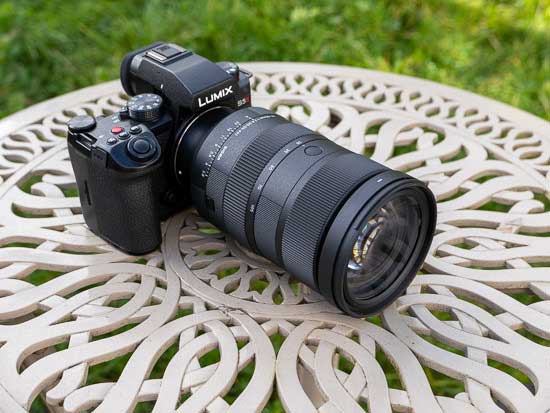
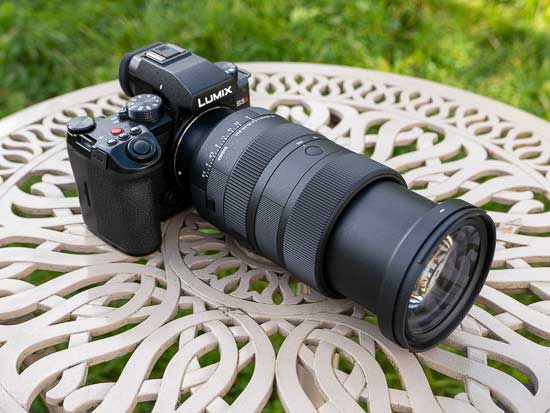
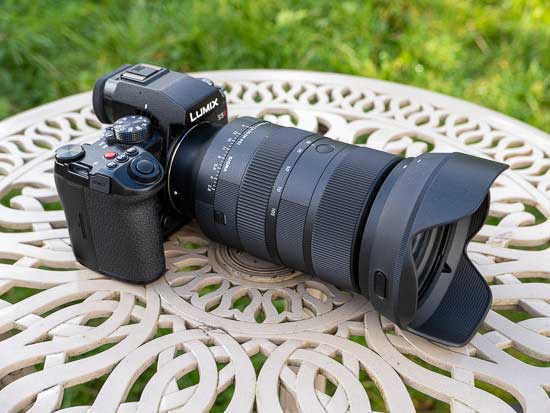
In terms of features, the Sigma 28-105mm F2.8 DG DN Art offers almost everything that you need from a standard zoom lens.
Focusing is usefully internal and manual focusing is possible when set via the Focus switch on the lens barrel. Full-time manual focus override is also available at any time simply by rotating the focus ring.
The Sigma 28-105mm F2.8 DG DN Art lens has a generously sized focus ring, which is ridged for easier grip. There are no hard stops at the ends of the range, making it harder to set focus at infinity. Polariser users should be pleased that the 82mm filter thread doesn’t rotate on focus.

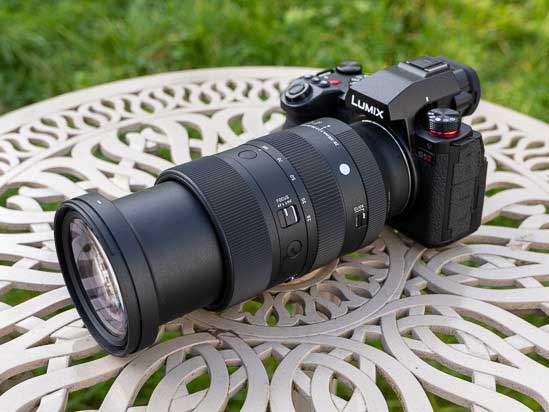

The Lock function switch is a useful feature that helps protect the lens. Set the focal length to 24mm and move it to the Lock position to prevent the zoom mechanism from creeping when the camera is pointed down or in storage.
There are two dedicated Auto Focus Lock (AFL) buttons that can also be re-configured to assign various functions to the lens barrel.
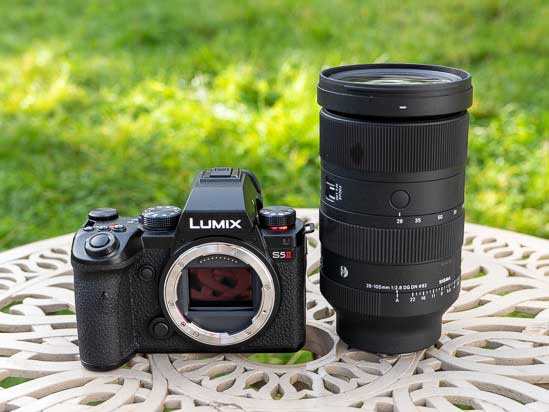
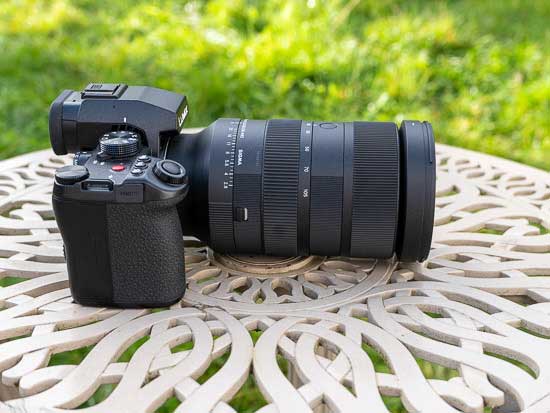

When it comes to auto-focusing, the 28-105mm F2.8 DG DN Art is satisfyingly fast, taking less than 0.10 seconds to lock onto the subject when mounted on the Panasonic Lumix S5III that we tested it with.
We didn’t experience very much “hunting” at all, either in good or bad light, with the lens accurately focusing almost all of the time. It’s also a very quiet performer, which makes this lens equally well-suited to both video recording and more candid stills shooting.
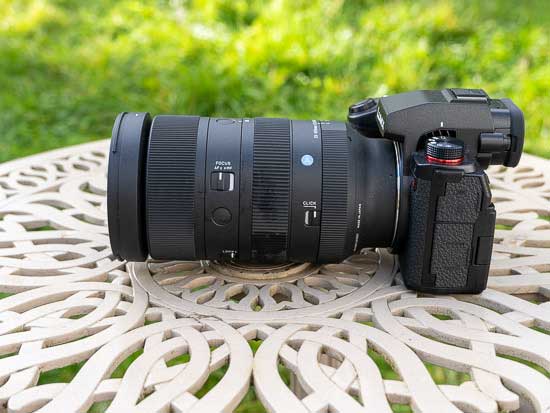
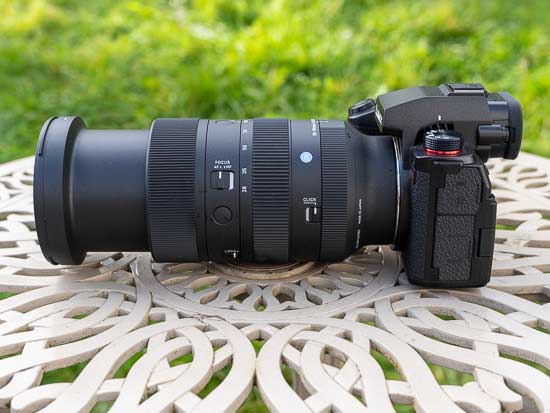

The main missing feature is optical image stabilisation, so it relies on the camera body’s own built-in stabilisation, which is fine unless you’re an owner of an older camera body that doesn’t have this feature.
Also it does not have an internal zoom mechanism, with the lens gradually extending by approx. 4cm as you zoom out from 24mm to 105mm.


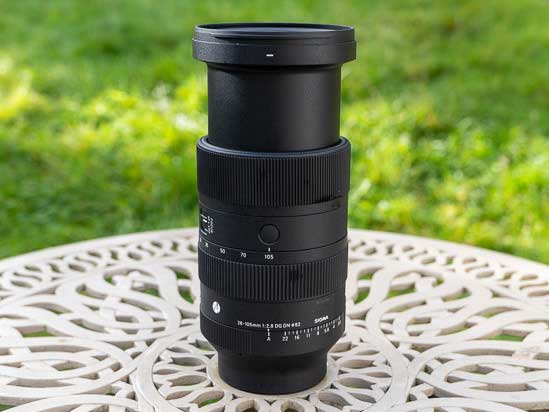
The Sigma 28-105mm F2.8 DG DN Art ships with a good quality soft case and also a plastic petal-shaped lens hood (LH878-07) with a locking mechanism.
Its main E-mount rival, the Sony FE 24-70mm F2.8 GM II is lighter at 695g / 24.6oz. and shorter at 12cm in length. Other options include the Sony FE 24-105 f/4 G OSS and the Sigma 24-70mm f2.8 DG DN II Art.
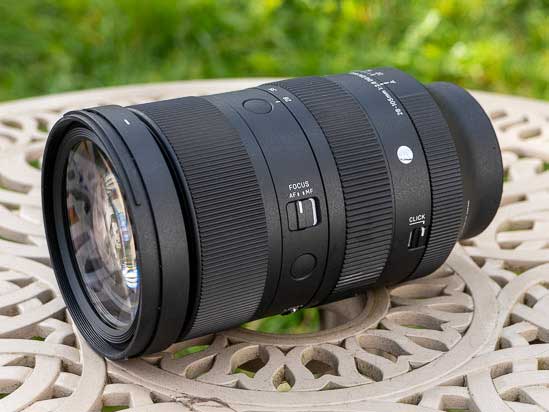
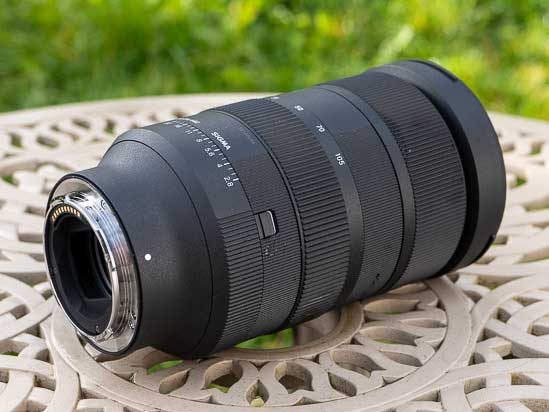

If you want even more telephoto reach, there’s also the Tamron 35-150mm F/2-2.8 Di III VXD and Samyang AF 35-150mm F2-2.8 FE.
On the L-mount side, the Panasonic Lumix S PRO 24-70mm F2.8 is almost as heavy (935g) and slightly shorter (14cm), with the Leica VARIO-ELMARIT-SL 24-70mm f/2.8 ASPH. also worth considering.
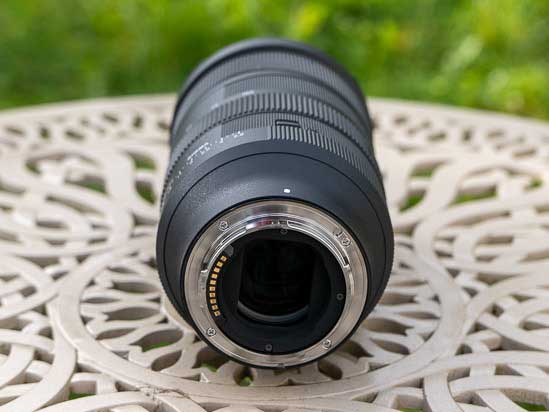
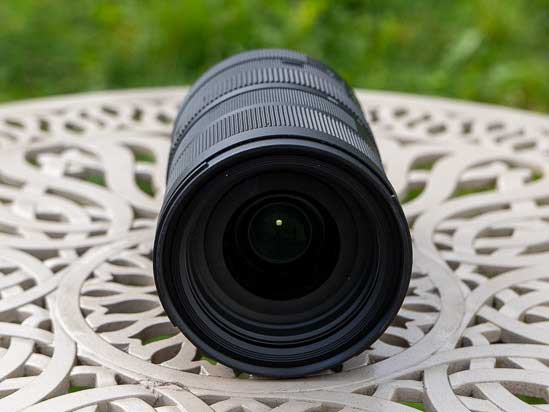
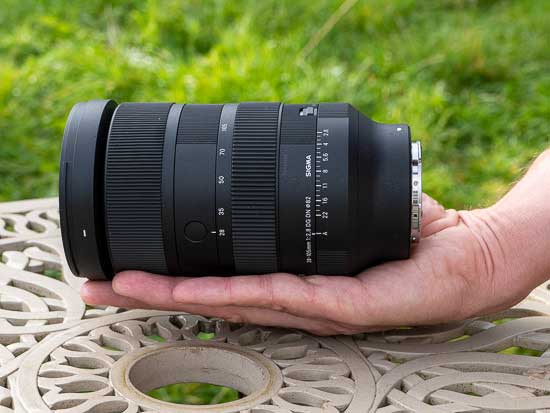
Focal Range
At the 28mm focal length the angle of view is 75.4 degrees.
 28mm
28mm
At the 105mm focal length the angle of view is 23.3 degrees.
 105mm
105mm
Chromatic Aberrations
Chromatic aberrations, typically seen as blue or purple fringes along contrasty edges, were not very apparent in our test shots, only appearing in very high contrast areas.
 28mm
28mm
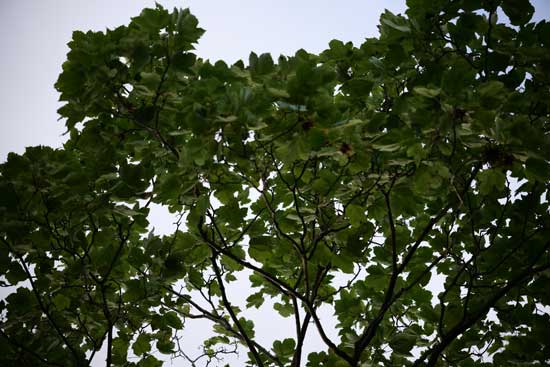 105mm
105mm
Vignetting
With the lens set to its maximum aperture of f/2.8, there is some obvious light fall-off in the corners, requiring you to stop down by 3 f-stops to completely prevent it.
 28mm
28mm
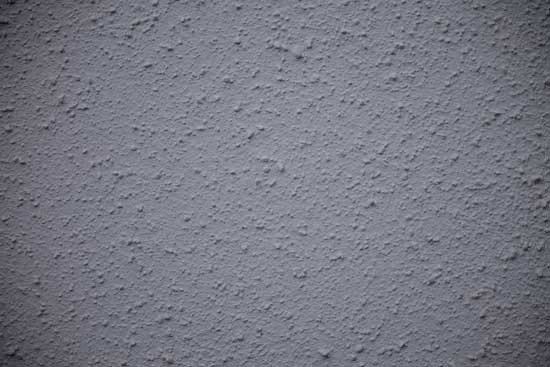 105mm
105mm
Distortion
Distortion is kept to an absolute minimum at both extremes of the zoom range, aside from if you’re shooting very close up to your subject and are actively trying to create a distorted effect.
 28mm
28mm
 105mm
105mm
Sunstars
The Sigma 28-105mm F2.8 DG DN Art produces quite nice sunstars when stopped-down to f/16-f/22, as shown below, and flare is well controlled even when shooting directly into the sun.
 28mm
28mm
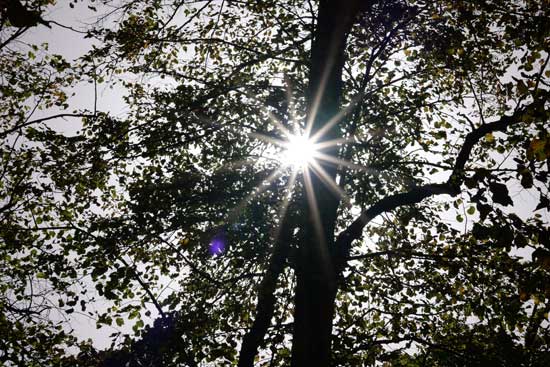 105mm
105mm
Macro
The Sigma 28-105mm F2.8 DG DN Art offers a minimum focusing distance of 0.40m (1.31ft) and a maximum reproduction ratio of 1:3.1 at 105mm. The fast aperture allows you to create shallow depth of field effects making it suitable for typical macro subjects such as flowers.






Bokeh
Bokeh is a word used for the out-of-focus areas of a photograph, and is usually described in qualitative terms, such as smooth / creamy / harsh etc.
In the 28-105mm F2.8 DG DN Art lens, Sigma employed an iris diaphragm with 12 rounded blades, which has resulted in very appealing bokeh.
We do realise, however, that bokeh evaluation is subjective, so we’ve included several examples for your perusal.






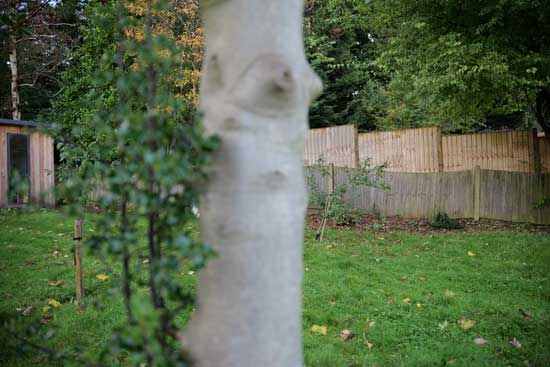
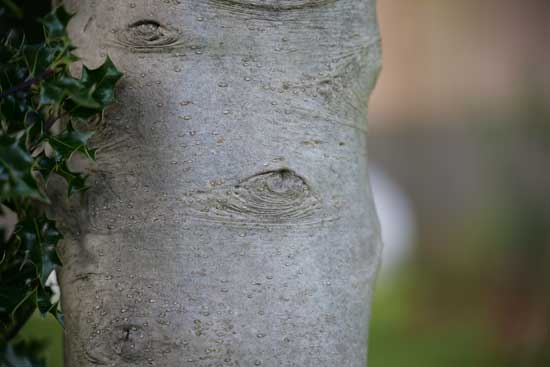

Sharpness
In order to show you how sharp the Sigma 28-105mm F2.8 DG DN Art lens is, we are providing 100% crops on the following pages.
Credit : Source Post






